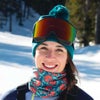Heading out the door? Read this article on the new Outside+ app available now on iOS devices for members! Download the app.
All-mountain skis should, by their very definition, be able to handle the whole mountain—the groomers, the moguls, the glades, the back bowls, and the headwalls—no matter the snow conditions. We’re talking corduroy, crud, mank, mashed potatoes, spring corn, powder, and everything in between. Most all-mountain skis these days check all of those boxes. They’re designed from their cores out to be versatile enough to make any day on the mountain a good day.
Watch: Behind the Scenes of the 2024 SKI Test at Mt. Rose
Where all-mountain skis differ is not necessarily in their ability to handle various terrain or snow conditions, but in their ability to handle various skier abilities. Some all-mountain skis are designed to work for a wide range of skiers, which is a wonderful trait in terms of approachability. The problem with some of these skis, however, is that they can’t do what strong, expert skiers expect them to do.
Related: The Best All-Mountain Skis of 2025, Ranked
Expert skiers who have the ability and skill to arc large-radius turns down the fall line at mach speeds no matter the terrain or snow need an all-mountain ski that can stand up to that kind of pressure. And even experts who don’t necessarily charge but know how to bend and edge a ski expect a certain level of precision from their all-mountain ride.
Skis that check these boxes are built a little differently. Skis specifically designed for experts tend to feature more metal, more traditional camber underfoot, and beefier sidewall constructions. A ski like that won’t bat an eye if you decide to carve super-G turns down the headwall in days-old crud, huck your meat off a mandatory air into an apron riddled with bomb holes, or even lay trenches on not-so-soft groomers to get back to the chair.
Sound like your speed? Check out these eight all-mountain skis that were top-rated selections for experts at our 2024 SKI Test at Mt. Rose, Nevada. If you fancy yourself a pro, you’ll find your ride on this list.
At a Glance
- Blizzard Anomaly 94 ($750)
- Nordica Enforcer 99 ($800)
- Salomon Stance 96 ($750)
- Stöckli Stormrider 95 ($1,299)
- Volkl M7 Mantra ($850)
- Blizzard Black Pearl 94 ($750)
- Fischer Ranger 96 ($800)
- Nordica Santa Ana 92 ($700)
- How We Test
- FAQ
If you buy through our links, we may earn an affiliate commission. This supports our mission to get more people active and outside. Learn more.

Blizzard Anomaly 94
Lengths: 164, 170, 176, 182, 188 cm
Dimensions: 132.5-94-114.5 mm
Radius: 18.5 m (182 cm)
Gender: Unisex
Pros and Cons
⊕ Versatile
⊕ Excels at speed
⊗ Stiff
⊗ Unforgiving
Looking for a stout daily driver that delivers the more you push it? Testers recommend the Blizzard Anomaly 94 for hard-charging skiers who like everything from steeps to chutes to groomers. Though it has a hard-snow bias and shines on the groomers, the Anomaly 94 cruises through crud and variable snow like a tank.
Testers were impressed with the ski’s versatility and found the new Anomaly 94 to be stable at high speeds and quick edge-to-edge in bumps and crud. Across the board, testers were most surprised by its rebound energy on the groomers. They note that the Anomaly 94 is stiff in the front and unforgiving if you let off the gas. Bring your A game, however, and this ski will grip and rip all day long.
“This ski is for the skier who wants to tip it over and get immediate feedback,” commented one tester. “It’s fun to carve but it’s also great off-trail.”
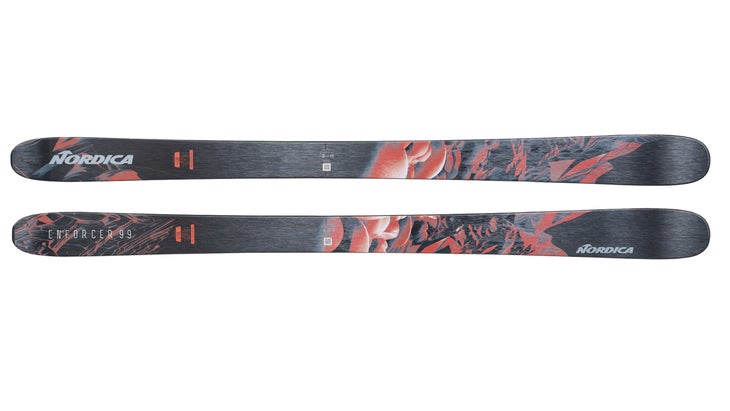
Nordica Enforcer 99
Lengths: 167, 173, 179, 185, 191 cm
Dimensions: 133-99-121 mm (185 cm)
Radius: 18.5 m (185 cm)
Gender: Unisex
Pros and Cons
⊕ Crud buster
⊕ Stable at speed
⊗ Stiff tails lock into a turn
The redesigned Enforcer 99 has a new tail shape and rocker profile that work in concert to create what one tester called “an all-mountain missile.” With a beefy sandwich sidewall construction that the Enforcer line is known for, plus unrelenting stability at speed, the Enforcer 99 was awarded “Best in Crud” status in the all-mountain category.
“The Enforcer is a beast that loves charging through crud at high speeds,” commented one tester. “Nothing really gets in its way.”
Experts can tame this burly crud buster, but testers warn not to expect a playful ski that can slash or pivot. It can feel unforgiving to less aggressive skiers because the same stiff tail that blasts through crud can also lock into a turn. But if you’re looking for a sub-100-millimeter-waisted ski that can handle variable terrain and snow conditions, the Enforcer 99 is a rock-solid option.
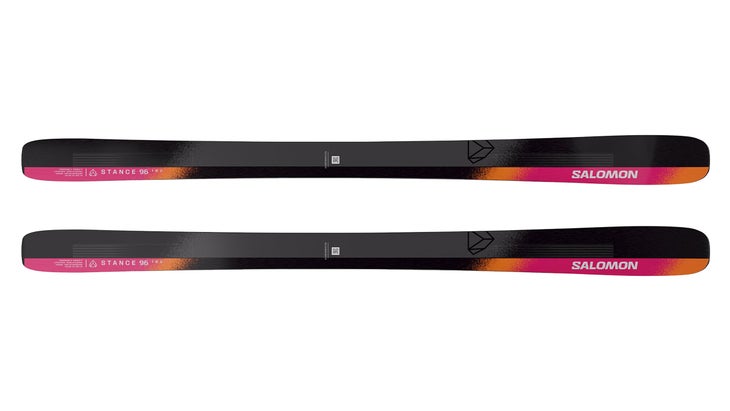
Salomon Stance 96
$750 at Backcountry $750 at Erik’s
Lengths: 168, 176, 182, 188 cm
Dimensions: 132-96-114 mm
Radius: 20 m (182 cm)
Gender: Unisex
Pros and Cons
⊕ Versatile
⊕ Stable
⊗ Tip chatter at high speed
The Salomon Stance 96 won the honors of “Best in Test” from SKI’s expert testers, who found it to be the most adaptable and well-rounded ski in the all-mountain category. Like an Olympic gymnast, the 96-millimeter-waisted ski is powerful, nimble and balanced.
After a redesign of the Titanal frame last season, the carryover Stance 96 can scratch the one-ski quiver itch this season for those looking for a maneuverable ski that can handle variable snow and terrain both on- and off-piste.
But even “Best in Test” skis have an Achilles’ heel, and testers detected slight tip chatter from the Stance 96 in high-speed GS turns. But overall, testers found few flaws with the Stance 96. “It’s a benchmark all-mountain ski,” noted one tester. “It’s very balanced, fun, can perform well on the groomers, and also float in powder.”
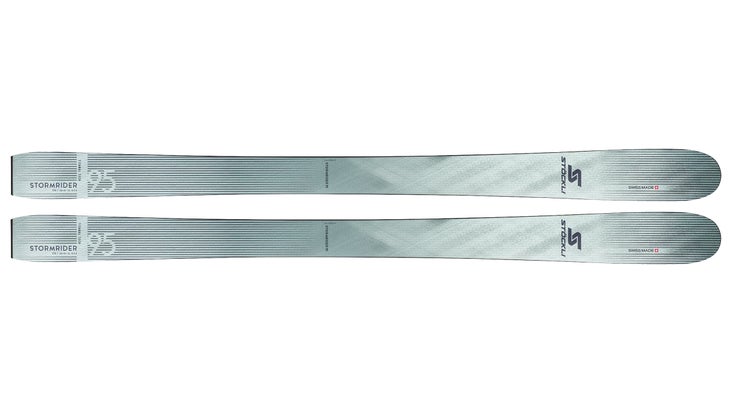
Stöckli Stormrider 95
$1,299 at Utah Ski Gear $1,299 at Ski Essentials
Lengths: 170, 176, 182, 188 cm
Dimensions: 132-95-120 mm
Radius: 18.5 m (182 cm)
Gender: Unisex
Pros and Cons
⊕ Smooth with a capital “S”
⊕ Redesigned tail enhances precision
⊗ Lacks rebound energy
Stöckli is the king of smooth, and the Stormrider 95 is no exception. SKI’s expert testers lauded the 95-millimeter-waisted ski for what one tester called its “smoooothness, with all the extra o’s,” and gave it high scores for carving and stability at speed.
Out of the three Stormrider models in the line, the 95 got a redesign this season to soften the tail in the already weight-conscious construction. Testers found the Stormrider 95 wasn’t as powerful or dynamic as some models in the all-mountain category, but expert skiers who prioritize on-piste performance will find a sleek, high-end cruiser that’s quick edge-to-edge and easy to turn.
“The Stormrider 95 excels on the groomers with its easy turning,” noted one tester. “It handles like a sweet sports car on hardpack.”
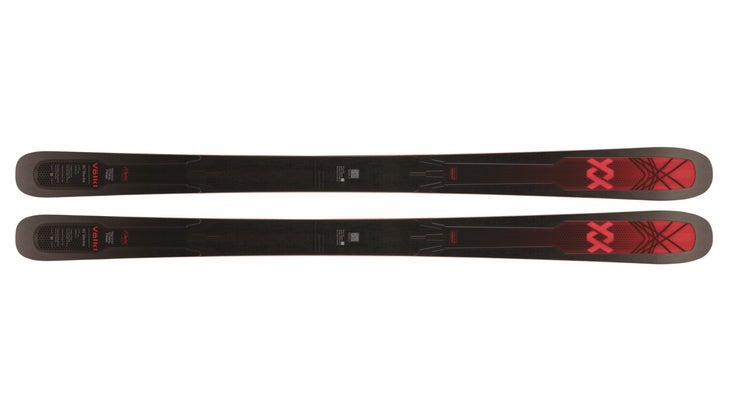
Völkl M7 Mantra
Lengths: 163, 170, 177, 184, 191 cm
Dimensions: 139-96-121 mm
Radius: 16.8 m (177 cm)
Gender: Unisex
Pros and Cons
⊕ Easier turn initiation than previous models
⊕ Snappy and responsive
⊗ Takes a lot of work to ski in bumps
The Völkl M7 Mantra was deemed “Best for Carving” in the all-mountain category, thanks to Völkl’s 4 Radius Drive sidecut technology—the next gen of the brand’s 3D Radius Sidecut—which improves the ski’s liveliness and maneuverability. The 96-millimeter waist adds versatility in different snow conditions, but as with other Mantra models, the M7 favors the fall line.
“It’s a ripping carver that handles pow well,” reported one tester. “The 4D is a good improvement and makes it even easier to start a turn.”
The Tailored Titanal Frame customizes the amount of metal in the layup by length offering, so choose your length wisely. It can be unwieldy in bumps, but testers say aggressive skiers looking for a carve-focused all-mountain ski will be stoked with the M7 Mantra’s edge hold and race car responsiveness.
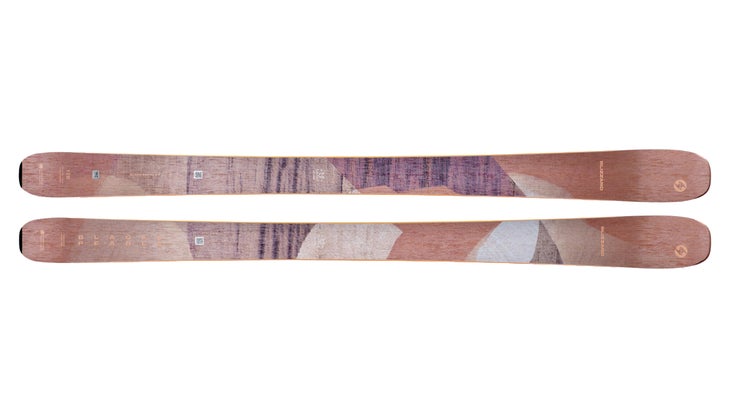
Blizzard Black Pearl 94
Lengths: 152, 158, 164, 170, 176 cm
Dimensions: 131.5-94-13.5 mm
Radius: 14.5 m (164 cm)
Gender: Women
Pros and Cons
⊕ Reliable edge grip on hard snow
⊕ Easy to roll on edge
⊗ Not as versatile as some in the category
If we’re being honest, most of us ski more hardpack than pow. Enter the Blizzard Black Pearl 94, voted “Best for Hard Snow” by SKI’s expert testers. Redesigned for 2025 with a metal laminate layer and a deeper rocker profile, the Black Pearl 94 can drive through crud and float over soft snow, but its happy place is carving, where testers say it can roll on edge like a frontside ski.
“The Black Pearl 94 is more approachable than its predecessor,” said one tester. “The tip engages effortlessly when laying over a turn and it holds solid on hardpack in a variety of turn shapes.”
At 94 millimeters underfoot, and with a relatively stiff tail, the Black Pearl 94 is not as versatile for powder or choppy snow as other wider-waisted skis in the category. Testers noted that intermediates would find a stable platform, but only advanced and expert skiers would unlock its full potential on hard snow.
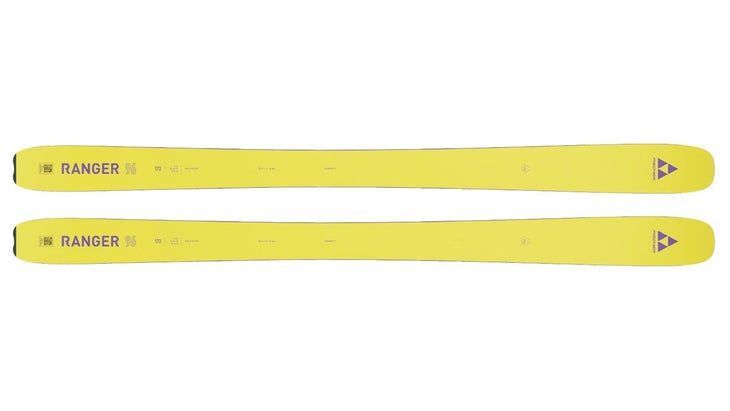
Fischer Ranger 96
$800 at Evo $800 at Utah Ski Gear
Lengths: 159, 166, 173, 180, 187 cm
Dimensions: 128-96-119 mm
Radius: 16 m (166 cm)
Gender: Unisex
Pros and Cons
⊕ Supremely versatile
⊕ Damp and stable
⊗ Rockered tips can chatter at speed
Voted “Most Versatile” by testers in terms of slaying both groomers and variable snow, the unisex Fischer Ranger 96 also impressed with its accessibility for a wide range of skiers—from intermediates learning how to roll a ski up on edge to experts looking for a daily driver.
“It’s a great all-around, all-mountain ski,” said one tester. “It’s equally happy in bumps and groomers as it is in chopped snow and mank.”
The Ranger 96 has a lightweight wood core, Fischer’s Freeski Rocker profile, and Titanal “shaped” underfoot to match the geometry of the ski. The result, according to one SKI tester, is a damp, stable, speed-loving ski that can turn tighter than its 16-meter turn radius.
Though the long rockered tips can chatter at speed, they also provide ample flotation for soft snow and help the ski roll on edge.
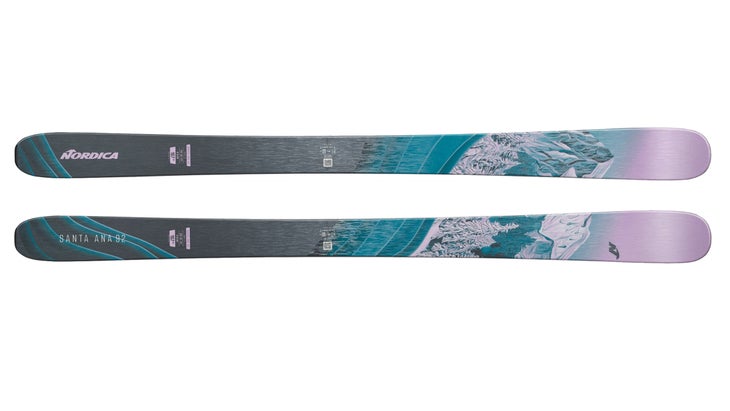
Nordica Santa Ana 92
Lengths: 150, 155, 161, 167, 173, 179 cm
Dimensions: 123-92-111 mm
Radius: 17 m (167 cm)
Gender: Women
Pros and Cons
⊕ Easy to maneuver
⊕ Excellent edge hold
⊗ Stiff at longer lengths
Ranked “Best for Experts” by SKI’s test crew, the Santa Ana 92 has enough spunk to keep experts interested in everyday resort conditions. For 2025, the Santa Ana 92 got a redesign to add a metal laminate tailored to each ski length. With a two-in-one core of wood and elastomer, the 92-millimeter-waisted ski has the right combination of liveliness, edge hold, and versatility to handle everything but copious amounts of snow.
“I appreciated this ski in steep terrain and variable snow conditions, but it also shines on groomers where it carves like a frontside ski,” noted one tester. “It provided a stable and dependable platform underfoot, even in a shorter length.”
Longer lengths have more metal and can be more work to maneuver in bumps and tight trees, according to testers. The Santa Ana 92 is also narrower than other skis in the all-mountain category. For all but the snowiest days, however, the Santa Ana 92 suits experts looking for a one-ski quiver on the East Coast or West Coast.
About SKI Test
- Number of skis tested: 14
- Number of testers: 27
- Testing location: Mt. Rose, Nevada
- Average age of tester: 37
- Average height of tester: 5’7”
- Average weight of tester: 144 lbs
Every season, Outside and SKI host a week-long gear test and invite a group of seasoned industry professionals—ski instructors, ski shop employees, coaches, and outdoor industry professionals—to put more than 150 pairs of skis through their paces.
We ask our crew of 27 testers to ski every ski, identify its primary strengths, its weaknesses, who it’s designed for, and what terrain and snow conditions it’s most adept at. When judging a frontside ski, testers primarily assess how well it performs on groomed terrain, since that’s what this type of ski is primarily designed for.
They gauge how well the ski handles on hard snow, at speed, and how responsive it is from edge to edge. Immediately after each run, testers fill out digital scorecards with their quantitative and qualitative feedback on each ski. Then it’s up to us to crunch the numbers and distill their commentary to inform our reviews of the best skis on the market today.
Frequently Asked Questions
What’s the Difference Between Intermediate Skis and Skis for Advanced or Expert Skiers?
Skis designed for intermediate skiers tend to be more affordable and lighter than skis designed for experts because they use less expensive materials. This is not to say that these skis don’t ski well—they get the job done just fine for intermediates who ski at moderate speeds and who push or pivot their skis through a turn (as opposed to carve a turn).
Skis designed for advanced and expert skiers tend to contain heavier materials like metal for enhanced stability at speed, better energy transfer, and more precise edging performance.
What’s the Difference Between Beginner and Intermediate Skis?
There really isn’t such a thing as beginner skis because true novices usually rent skis instead of buying them. The skis marketed and sold to intermediates tend to be lower-priced models that forego high-end ski materials and manufacturing practices in the interest of keeping skis more affordable. We refer to these skis as “value” skis rather than “beginner” skis.
Instead of looking for a “beginner” or “intermediate” label on skis, novice skiers will want to look for a narrower ski (between 70-90 millimeters and designed for on-trail use) and carefully consider ski length when shopping for skis. The shorter the ski, the easier it will be to control and steer.
What Ski Length Is Right for Me?
It all depends on your physical build, skill, and skiing aspirations. The best way to determine the right ski length for you is to visit your local (and reputable) ski shop and talk to the pros. If that’s not an option, then a very general rule of thumb is that intermediate skiers should consider skis that are between chin and nose height.
A shorter ski is easier to turn and control, but offers less stability at speed and in variable snow conditions. So, if you’re an intermediate with big skiing aspirations, you might want to consider a slightly longer ski that you won’t outgrow in one season.
